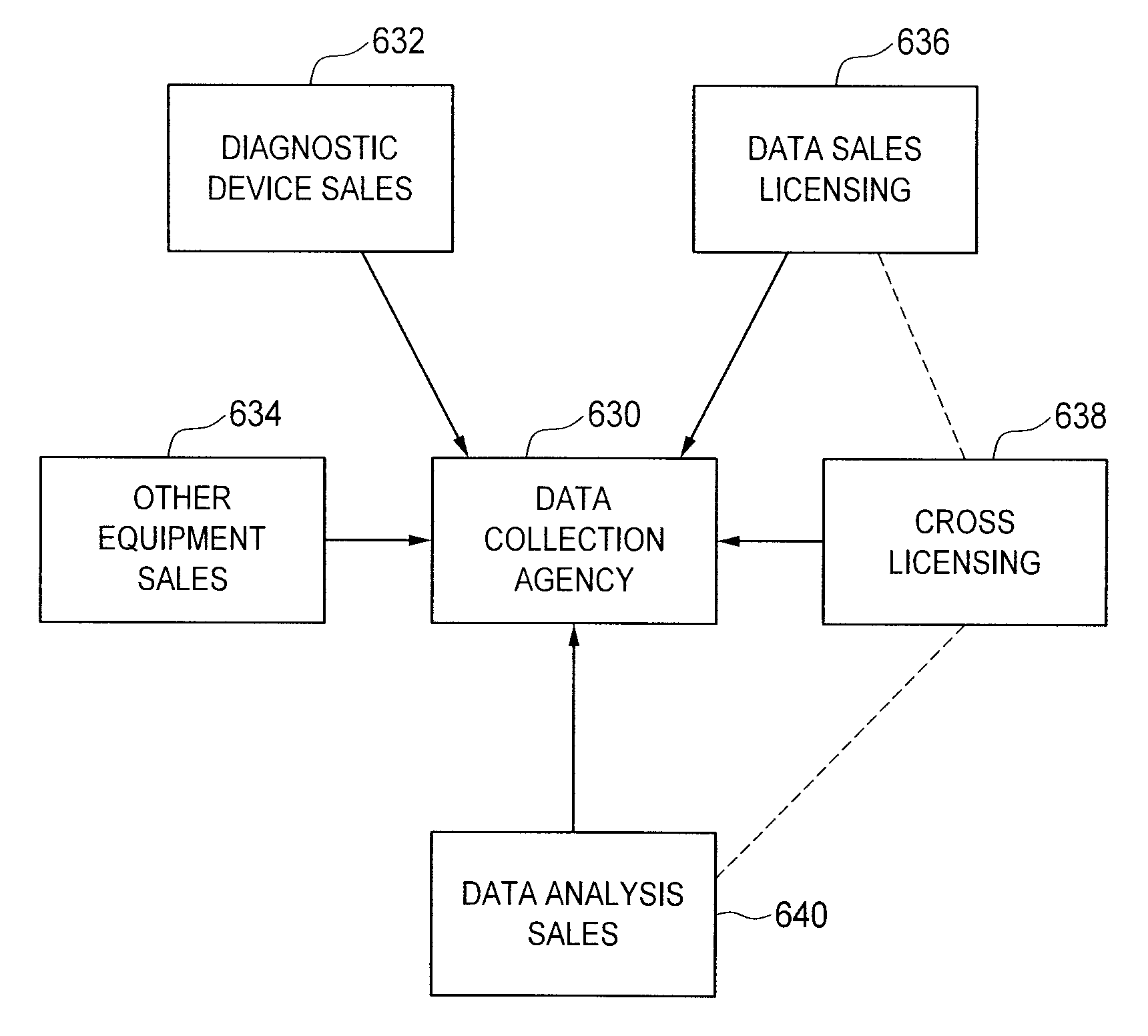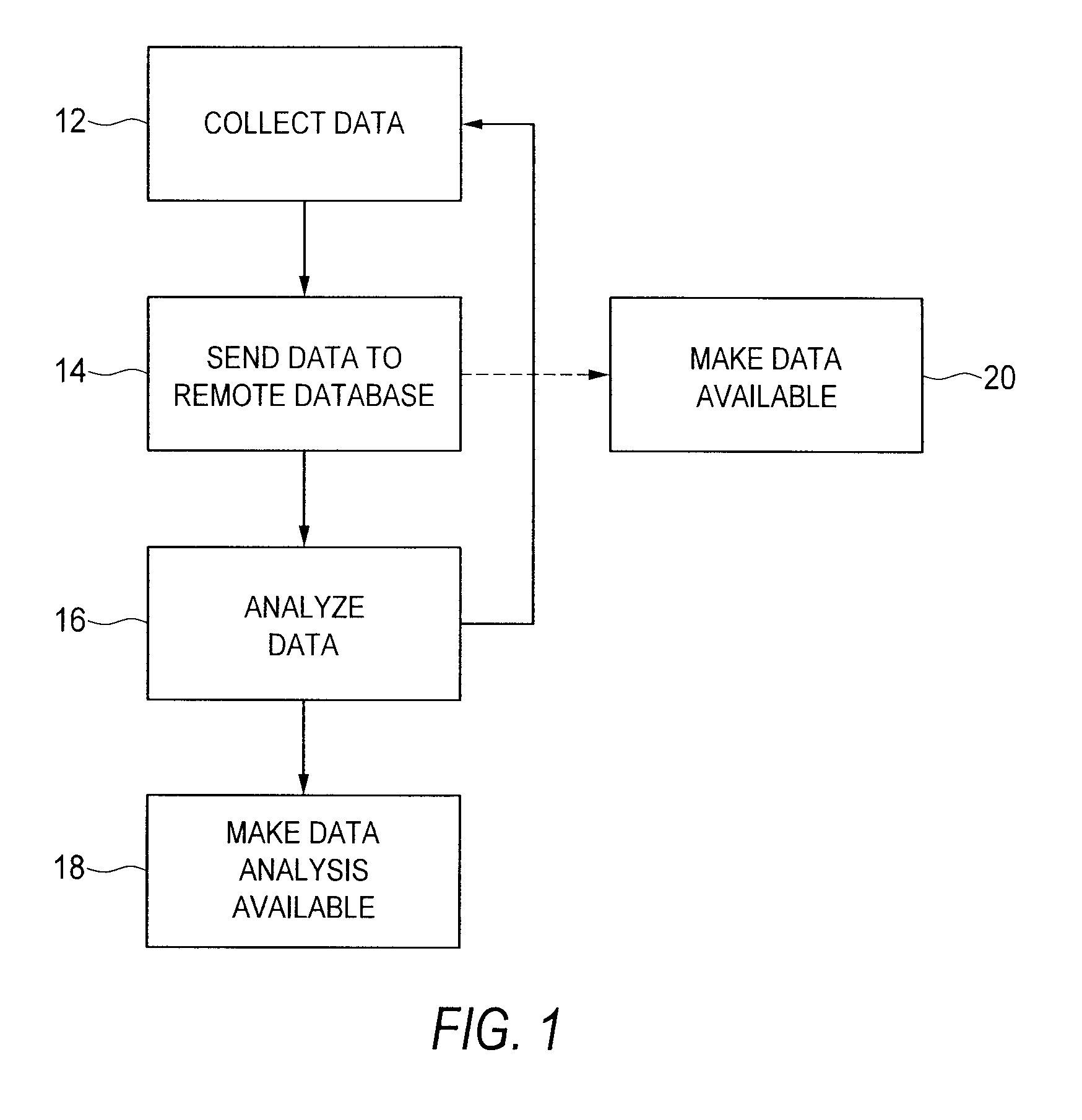Method and system for collating, storing, analyzing and enabling access to collected and analyzed data associated with biological and environmental test subjects
a biological and environmental test subject and data collection technology, applied in the field of data collection and analysis, can solve the problems of not being able to collect data for diagnosis, not being able to keep, and the value of previously collected data may be limited,
- Summary
- Abstract
- Description
- Claims
- Application Information
AI Technical Summary
Benefits of technology
Problems solved by technology
Method used
Image
Examples
Embodiment Construction
[0090]Referring now to FIGS. 1 and 3 of the drawings, there is schematically illustrated, in overview, a method according to one preferred embodiment of the present invention. FIG. 4 depicts certain aspects of the method in detail, and may be described in considerably greater detail elsewhere herein.
[0091]In FIG. 1, the present inventive method is described by a series of steps shown in a flowchart. In step 12, data is collected from a data source using a data collection unit. In the embodiment described herein, the data collected is preferably test data—including measurement data, detection data, and / or diagnostic data—such as might be gathered from a test device and / or computer and / or from in vivo, in serum, in vitro, and / or in silica sources. For example, the data may include pathogen identification data, data on previous drugs used, geographic and / or tracking (or other identifying) data, and / or epidemiological data (e.g., data on race and / or gender). The data may be gleaned from...
PUM
 Login to View More
Login to View More Abstract
Description
Claims
Application Information
 Login to View More
Login to View More - R&D
- Intellectual Property
- Life Sciences
- Materials
- Tech Scout
- Unparalleled Data Quality
- Higher Quality Content
- 60% Fewer Hallucinations
Browse by: Latest US Patents, China's latest patents, Technical Efficacy Thesaurus, Application Domain, Technology Topic, Popular Technical Reports.
© 2025 PatSnap. All rights reserved.Legal|Privacy policy|Modern Slavery Act Transparency Statement|Sitemap|About US| Contact US: help@patsnap.com



